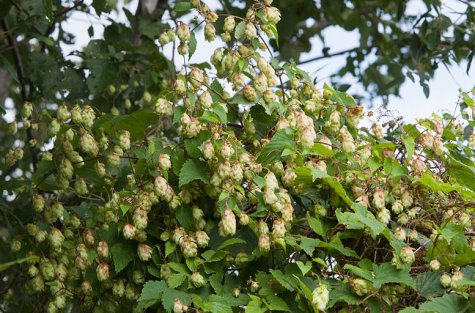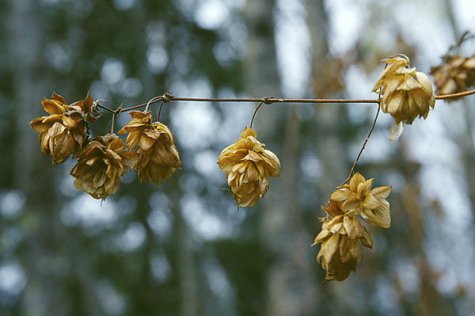Slightly exotic climber
Photos Arne Ader
Translation Liis
Humal. Emastaim käbidega
Hop; European hop Harilik humal Humulus lupulus
The time to pick the aromatic hop cones from the female plants is before they turn yellow. After picking, they should be dried at home. As ripe they are about 4 centimetres long, reminding of a sparse spruce cone. We don’t have many beer-brewing masters any longer but hops are good for making a calming or pain-killing tea or extract and have been used in folk medicine too.
The male and female inflorescences of hops grow on separate plants and they look different too – we have here a dioecious perennial plant with above-ground parts that ”die” in autumn.
The leaves remind of vine leaves, with three or five lobes, hairy and with a serrated edge. Note that the partly lignified stems of hop only twist clockwise as they ”climb” and adhere to stems, leaf stalks etc, also with hook-shaped spines on the inflorescence stems.
In the natural habitats of this climber or liana - riverside tree stands, floodplain forests and other humid forests - it can locally form nearly unpassable exotic jungle-like thickets. It grows up to 6 meters high, rarely more.
Hop. Female plant in autumn
Hmel is the word for hops in Russian – pohmell, an Estonian word for hang-over, is derived from it.










